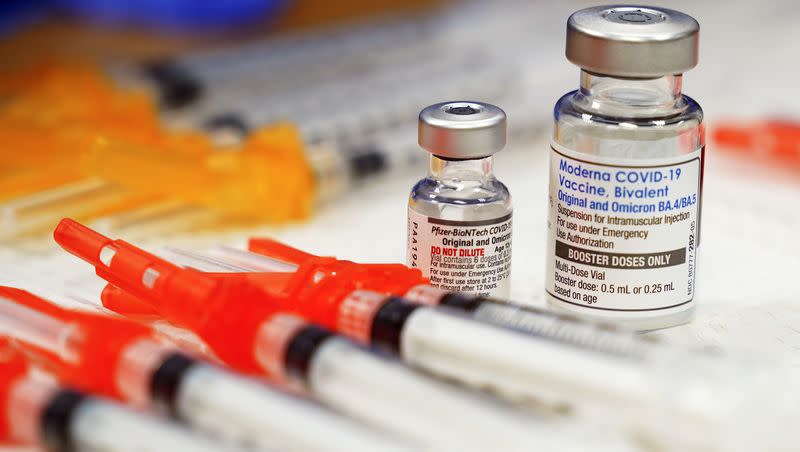Biden administration prepares for new COVID-19 vaccine rollout in fall

The Biden administration is speeding up the timeline to make the updated COVID-19 vaccine available to Americans, insured and uninsured, this fall, while investing in advanced treatments for the future.
Although the threat remains below pandemic levels, health officials are ramping up a campaign to encourage COVID-fatigued Americans to get booster shots, amid a rise in coronavirus cases and hospitalizations during the summer. And cases are expected to increase this fall, too.
In Utah, the seven-day average case count rose nearly 41% for the week ending Aug. 17, from about 68 cases to almost 96, as Lisa Riley Roche reported for the Deseret News.
In June, federal regulators asked Pfizer, Moderna and Novavax to create a new booster shot that protects against XBB.1.5 variant, also known as “Kraken,” which made up a majority of cases at the time.
Related
The bivalent booster shot currently available offers protections against early omicron strains that are no longer circulating.
But the strains spreading in the U.S. right now are EG.5 (“Eris”) and FL.1.5.1 (“Fornax”), both of which mutated from the XBB sublineage.
Meanwhile, a new highly mutated variant, BA.2.86, has shown similarities with omicron during the initial stages, and is being monitored by the World Health Organization.
Related
Should you get a COVID-19 booster shot?
Still, health care experts are suggesting that people wait to get the new booster shot instead of the bivalent vaccine.
“If you’re in a low-risk category and don’t have consistent interaction with high-risk family or friends, waiting for the updated booster may be the right call,” Dr. John Brownstein, chief innovation officer at Boston Children’s Hospital, told ABC News. “It is a highly individualized decision and unfortunately there isn’t perfect data on this.”
A January study by the Centers for Disease Control and Prevention found the bivalent vaccine was only 50% effective against the XBB strain in most adults.
Meanwhile, Moderna says its new booster shot, pending approval, “generates a robust immune response against” the newest variants.
The updated vaccine, still pending approval from the Food and Drug Administration, will be ready in September, and widely available to the public shortly after, said Dr. Scott Gottlieb, former FDA commissioner, in an appearance on CBS’ “Face the Nation.”
“So Sept. 12 has been the date that they’ve talked about, but it’s going to be some point in mid-September that these will be widely accessible in pharmacies and other health departments and so people can go out and get it,” he said.
Related
Will the new COVID-19 vaccines be available to the uninsured?
Apart from breaking through COVID fatigue, the Biden administration also needs to finalize contracts with pharmacies like CVS and Walgreens to distribute the vaccines as soon as they become available.
Contract negotiations are being fast tracked so that as many as 30 million uninsured individuals get a COVID-19 shot without paying out of pocket, as Politico reported.
Although Biden ended the COVID-19 public health emergency in May, the U.S. Department of Health and Human Services dedicated $1.1 billion to bridge the gap for the uninsured in the meantime.
“Vaccination is especially important as we head into fall and winter, a time when COVID-19 and other respiratory diseases are likely to circulate,” said CDC Director Dr. Mandy Cohen.
This program will launch in the fall and expire at the end of the year but how it fits into the Biden administration’s larger vaccine campaign for the fall is unclear.
Future investments into COVID-19 treatments
The latest investments indicate the administration is thinking beyond just this fall. The Department of Health and Human Services poured in $1.4 billion for Project Next Gen to keep up with the tools necessary to deal with the evolving coronavirus.
The program includes advancing vaccines and other therapeutics through clinical trials, regulatory review and commercial distribution.
“As the virus continues to evolve, we need new tools that keep pace with those changes,” said Assistant Secretary for Preparedness and Response Dawn O’Connell, according to the press release.
“Project NextGen combines the research and development expertise at HHS with the lessons we have learned about the virus throughout the pandemic — strengthening our preparedness for whatever comes next.”

